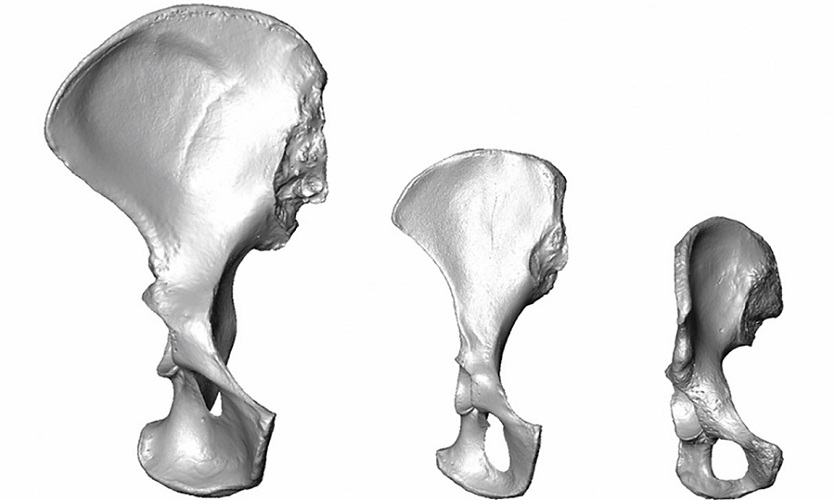Genes reveal how our pelvis evolved for upright walking

Image: Compared with gorilla and chimp pelvises (left and middle), the human pelvis is curved and rotates out to the side to support upright walking.
The wide, basin-shaped human pelvis is a defining physical feature of our species. Without it, we couldn’t walk upright or give birth to big-brained babies.
A new study of human embryos has pinpointed the window in embryonic development during which the pelvis begins to look humanlike and identified hundreds of genes and regulatory RNA regions that drive this transformation.
According to Dr Mark Grabowski, Senior Lecturer in Evolutionary Anthropology at LJMU, the study is important because up to this point the developmental-genetic mechanisms that guide these drastic evolutionary changes when compared to other apes were largely unknown.
“The human pelvis reveals a morphology that reflects selection for both bipedalism and birth. In this paper, we used both morphological, genetic, and genomic data to determine when in development a modern human pelvic shape appears, and then determine the genetic architecture underlying this shape.”
Genetic switches
The results support the idea that evolution often produces new physical features by acting on genetic switches that affect early embryonic development.
The team, led by Harvard evolutionary biologist Terence Capellini, is also found evidence of ancient genetic selection and genetic constraint on regulatory sequences that have to do with the ilium, the cranial (top) part of the pelvis that has changed the most in humans compared to other apes.
The study was reported this week in Science Advances.
The pelvic girdle in primates consists of three major parts: blade-shaped bones, called ilia, that fan out to form the hips and, below those, two tube-shaped fused bones known as the pubis and ischium, which give shape to the birth canal. Great apes have relatively elongated ilia that lie flat against the back of the animals, as well as relatively narrow birth canals. Humans have shorter, rounded ilia that flare out and curve around. The reshaped ilia provide attachment points for the muscles that make upright walking more stable, and a wider birth canal accommodates our big-brained babies.
More than 4 million years ago
Professor Capellini, says those pelvic patterns were already emerging in early human ancestors such as the 4.4-million-year-old hominin Ardipithecus ramidus, which had slightly turned-out ilia and is thought to have at least occasionally walked on two feet.
To read more in depth about this fascinating study, go to Michael Price’s piece in Science Genes reveal how our pelvis evolved for upright walking | Science | AAAS


